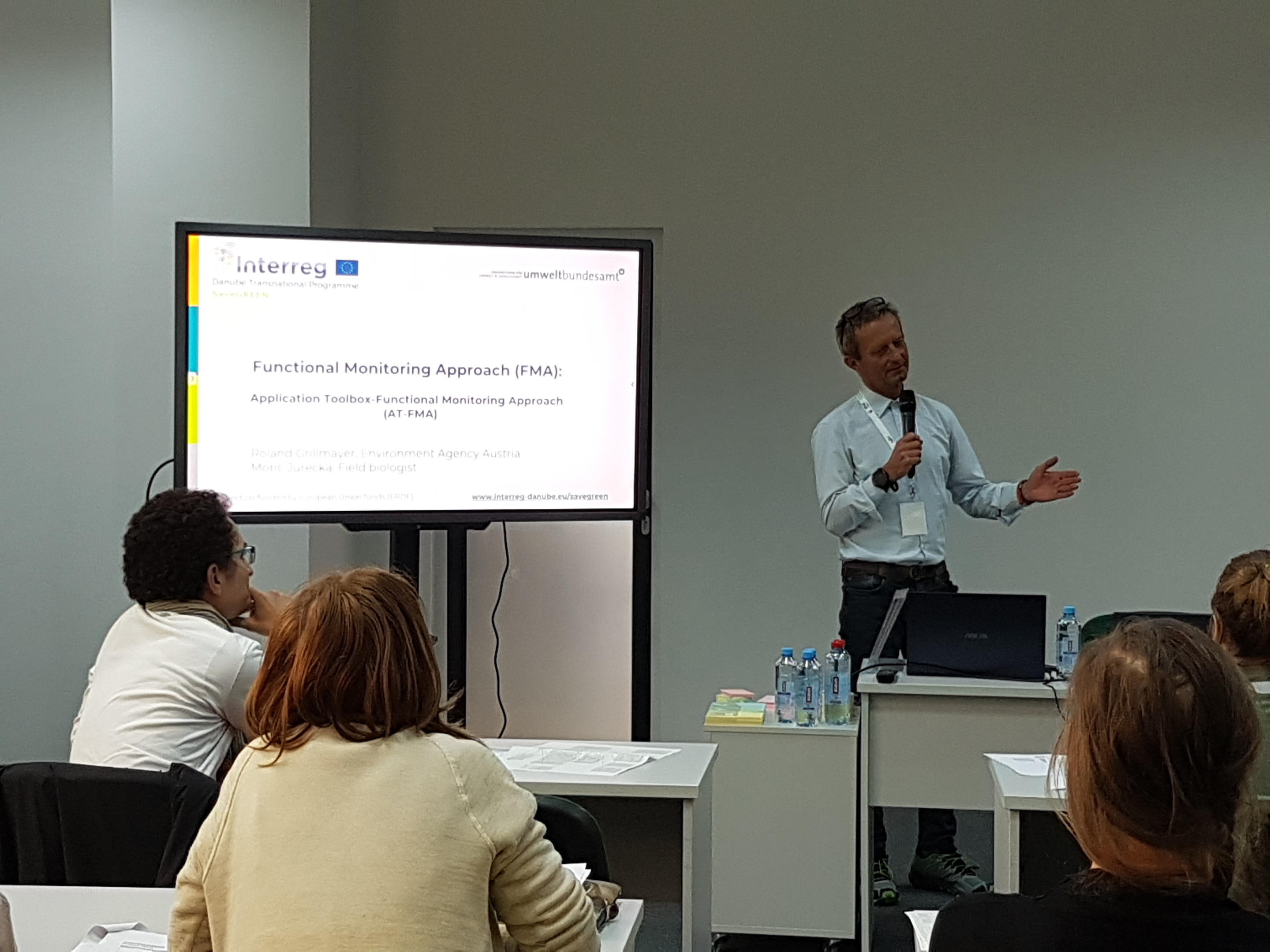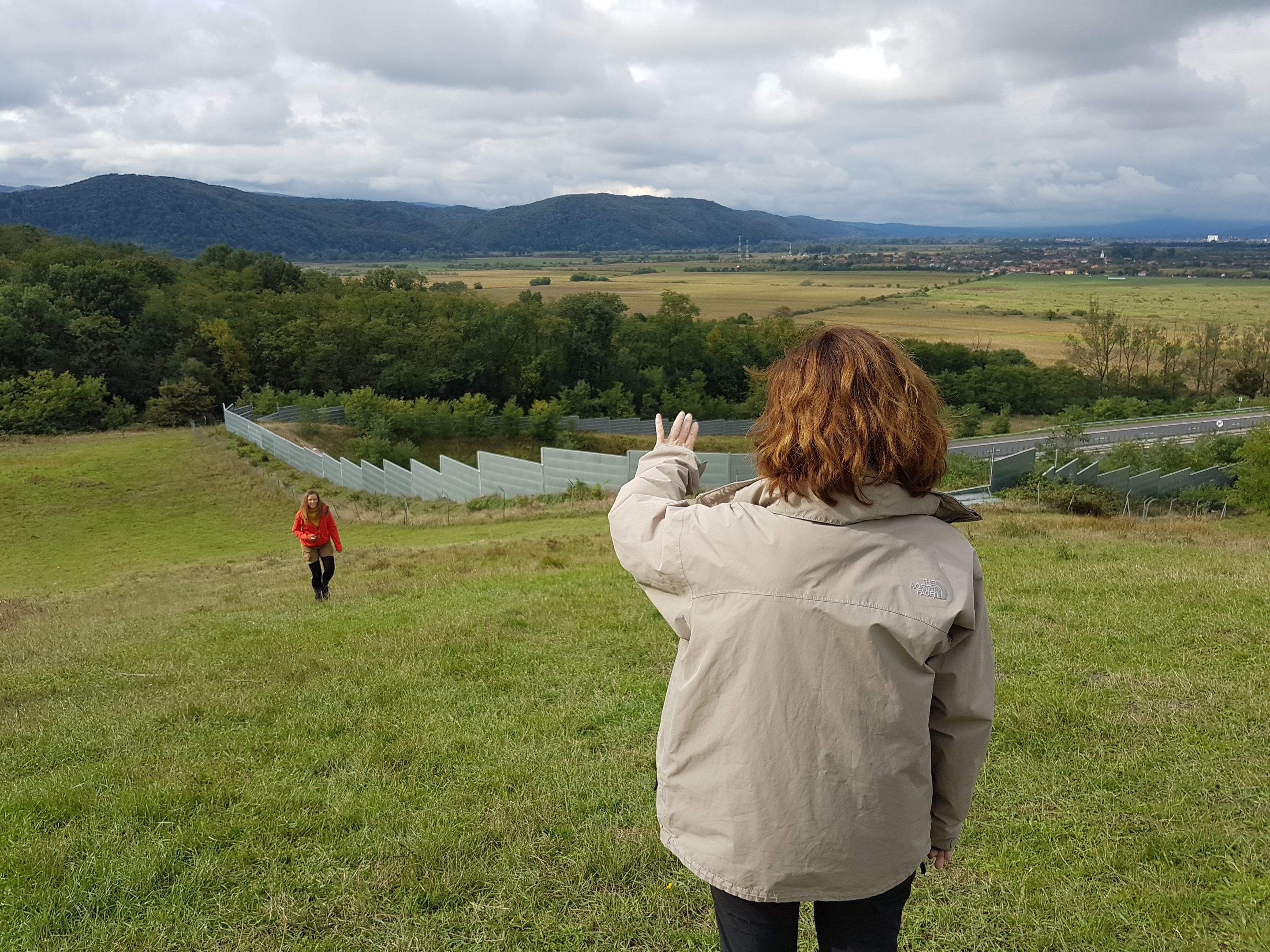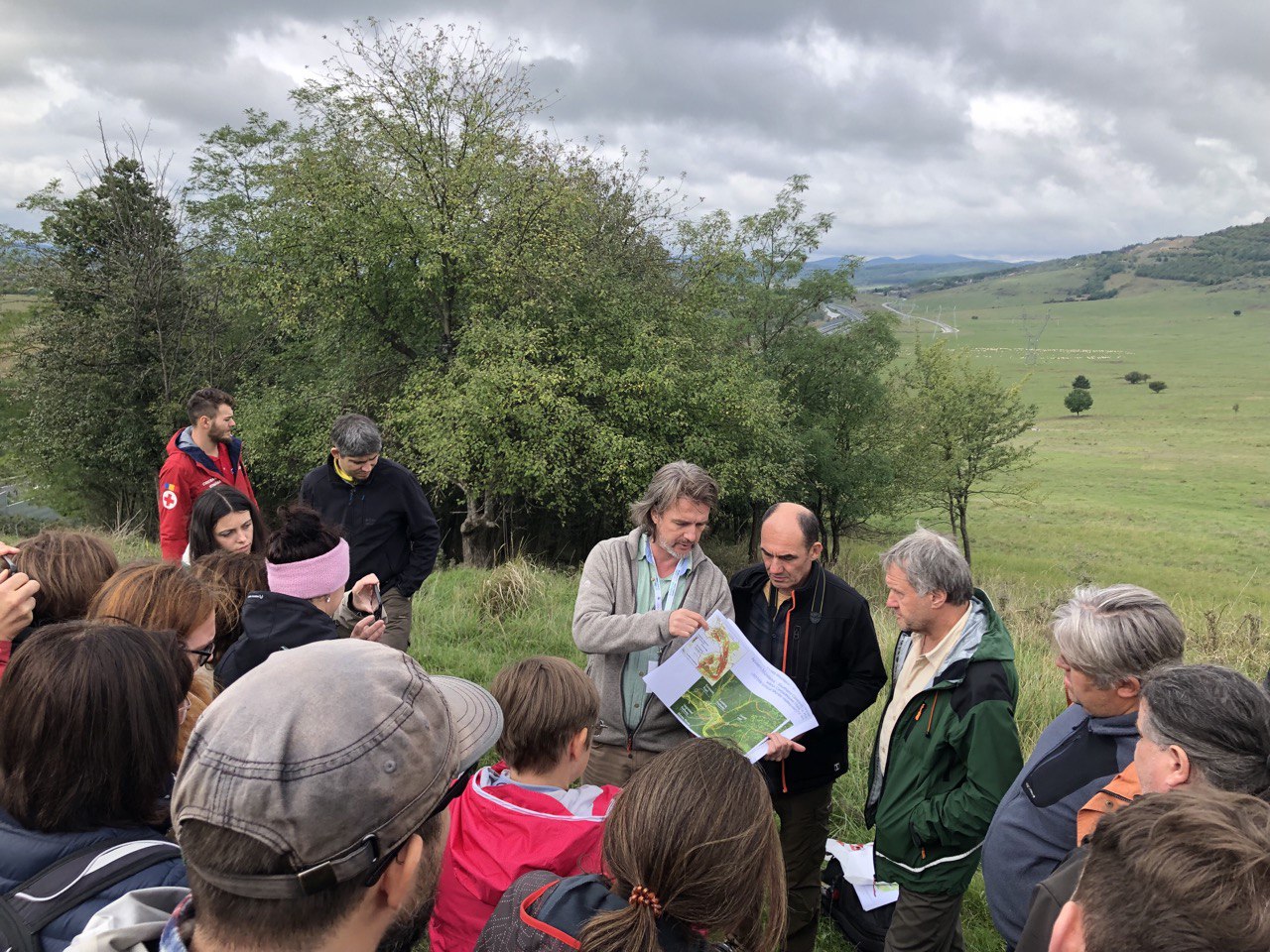SaveGREEN - Placing eco-connectivity on the map at IENE 2022 conference | Side event: Romanian transnational experience exchange workshop
10-10-2022
From 19-23 September 2022, the SaveGREEN Consortium attended and contributed to the IENE 2022 Conference in Romania. The event offered the SaveGREEN team the valuable opportunity to meet and exchange with a host of different actors working on ecological connectivity and transport infrastructure and to present their own work at four SaveGREEN-hosted sessions.
The Infrastructure and Ecology Network Europe (IENE) led biennial forum advocates for a pan-European network of environmentally sustainable transport infrastructure. This conference was the first that was held in an Eastern European country, where circumstances substantially differ from the Western European countries.
The IENE 2022 International Conference held in Cluj-Napoca at the end of September brought together 276 scientists, construction engineers and policymakers from 46 countries around the world with more than 50+ presentations, 4 field trips and 15 workshops. The conference was co-organized by USAMV Cluj-Napoca, Zarand Association, WWF Romania, and Cluj Metropolitan Area, in partnership with DTP SaveGREEN, Horizon 2020 BISON projects, GreenWeb and Transport4Nature initiatives.

Image 1.: Opening speeches by Cristian-Remus Papp (WWF Romania) and Radu Mot (Zarand Association) © Christophe Janz
Connecting people, connecting landscapes
Under the main IENE 2022 theme of an integrated approach for mainstreaming biodiversity into transport networks, participants explored the current state of the art and discussed the gaps, needs and solutions, were looking back for lessons learned and ahead for future challenges and opportunities, from Global, European perspectives and at regional (Carpathians, Danube, South East Europe and the Black Sea) levels.
The IENE 2022 Conference’s goal was to deliver a valuable event, in terms of knowledge exchange:
- by presenting best practices, state-of-the-art and recent research results,
- on current initiatives, cooperation and projects,
- on present approaches, challenges and opportunities of the future;
...networking:
- with worldwide initiatives and strategic actors,
- between stakeholders, practitioners, students and experts with different backgrounds);
...fostering future (cross-sectoral) cooperation:
- between local, national, and international potential partners;
...and also providing a comprehensive overview of where we stand, by proposing themes of interest on multiple relevant levels:
- policy and strategies (including financing);
- planning, design and environmental impact assessment of transport networks;
- implementation and management of transport infrastructures and mitigation measures;
- education, awareness, consultation and communication, lessons learned & knowledge exchange.
Cooperation on all levels
Hybrid workshops and also trips were organised during the conference, to participants to identify the technical or organisational solutions needed to achieve the desired future trajectories and be more connected to the topics. The event happened both live and online, to facilitate cooperation between relevant sectors (transport, nature protection, agriculture, forestry, water management, game management, tourism, spatial planning, etc.) to develop solutions for integrating biodiversity into transport infrastructure.
SaveGREEN checks into IENE2022
The SaveGREEN project consortium had the privilege to be represented at the event as a Conference Partner, supporting the organisation of the conference by taking responsibility for specific events. The dynamic workshops proposed by SaveGREEN project members were aimed at highlighting the difficulties of involving stakeholders when addressing the topic of ecological connectivity.

Image 2.: Roland Grillmayer (EAA) presenting the SaveGREEN functional monitoring approach © Hildegard Meyer
Several events were offered by the SaveGREEN consortium:
- Workshop on showcasing the application Toolbox for Functional Monitoring methodology for assessing functional connectivity led by the Austrian Environment Agency
- An innovative workshop offering alternatives on the difficulties of integrating ecological corridors into the planning of a motorway that touches upon N2000 sites by EPC Environmental Consulting.
- The Hungarian partner MATE University held several talks on the assessment of the permeability of the motorway in the north of Budapest for wildlife and had a focus on freshwater connectivity in relation to grey infrastructure, mainly highlighting the invasive species that use the streams for spreading.
- SaveGREEN's CEEweb and WWF CEE team held a Workshop named “Strategies for stakeholder outreach and involvement around ecological connectivity – an experience exchange with members of the SaveGREEN Project organised in-person and online.
- At the very beginning of the 4-day event, a press conference was organised where several media outlets were introduced to the aims of IENE 2022 and the associated projects such as SaveGREEN (find the press release here).
"Establishing a transnational and multi-sectoral consensus on the role of ecological connectivity in human and natural well-being is essential to achieve the desired progress and to evolve in a way that will not harm us in the future. We need to learn from each other and join forces for the common good because without biodiversity we cannot have a safe and healthy existence, with or without highways",
- Ioana Ismail, SaveGREEN Project Manager for WWF Romania.
The reality on the ground
In addition to the workshops hosted by the SaveGREEN team at which the team presented the achievements of the project so far, it organised one of the four field trips that took place in various protected areas located in western Romania.

Image 3.: SaveGREEN and IENE experts assessing a green bridge in Arad Deva © Hildegard Meyer
Participants explored one of two pilot areas in the Mures Valley, a complex landscape of both economic and natural importance where they crossed an eco-duct and interacted with a shepherd who uses the green bridge for his sheep. Discussions focused on practical problems and solutions in one of Europe's most important regional ecological corridors, between the Southern Carpathians and the Apuseni Mountains, highlighting different aspects of connectivity at the landscape level and the importance of cooperation between sectors (transport, development, forestry, agriculture, water management, hunting, tourism, waste management and protected areas).
"After more than 2 years of the COVID-19 pandemic, the IENE 2022 Conference in Cluj Napoca provided a much-needed, fruitful, and much-appreciated opportunity for sectors involved in infrastructure and ecology to exchange new information from the latest scientific research, learn from each other's work experiences and make new connections",
- Christophe Janz, SaveGREEN Project Officer, WWF-Central and Eastern Europe.
Sustainability within the transport infrastructure for the future
The urgent need for cooperation to ensure the sustainability of transport infrastructure and to integrate biodiversity into the transport sector through coherent planning is reflected in the declaration of the IENE 2022 International Conference, which is supported by its participants and 400 experts from the IENE network. This declaration calls on stakeholders to share the latest knowledge, adapt it locally, and embrace ecological connectivity as a critical long-term objective to avoid landscape fragmentation in all development activities.

Image 4.: SaveGREEN and IENE experts analysing connectivity maps at a green bridge in the Mures valley © Christophe Janz
The Romanian Transnational Workshop as a case study was therefore embedded as part of IENE international conference ad a living proof of experimenting with different level of cooperation.
The aim of the workshop is to present the results of SaveGREEN to a range of international experts, to engage them based on examples from the field and to gain their feedback in order to test, improve and to facilitate the further use of the project’s output – the logframe of CSOPs and the collections of problems and measures.
During the field trip, we will explore a range of situations relevant for landscape connectivity and will relate with the problems/measures proposed by CSOPs. Participants will be asked to note their suggestions/comments based on their own experience on files dedicated to several relevant sectors.
Stay tuned for SaveGREEN's last project period where all the work of the past 2,5 years and results are coming together. Follow the journey online at the project's official website and see you at the Final Conference of SaveGREEN in Vienna!
Author:
Bianca Stefanut, WWF Romania
Contributed by:
Eszter Sebestyén, CEEweb for Biodiversity
